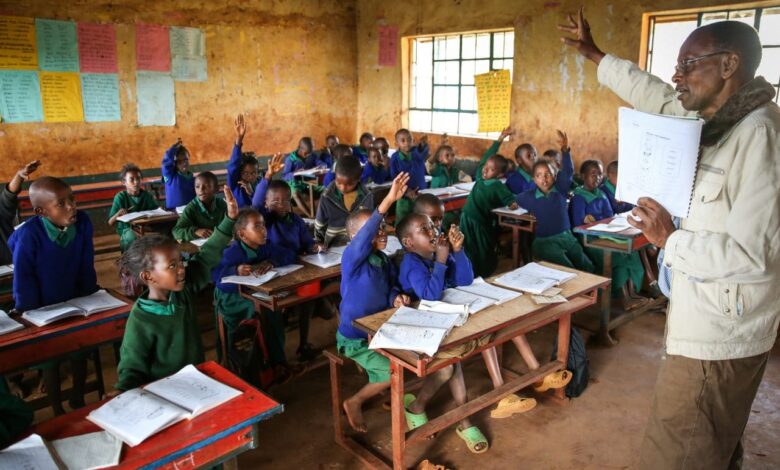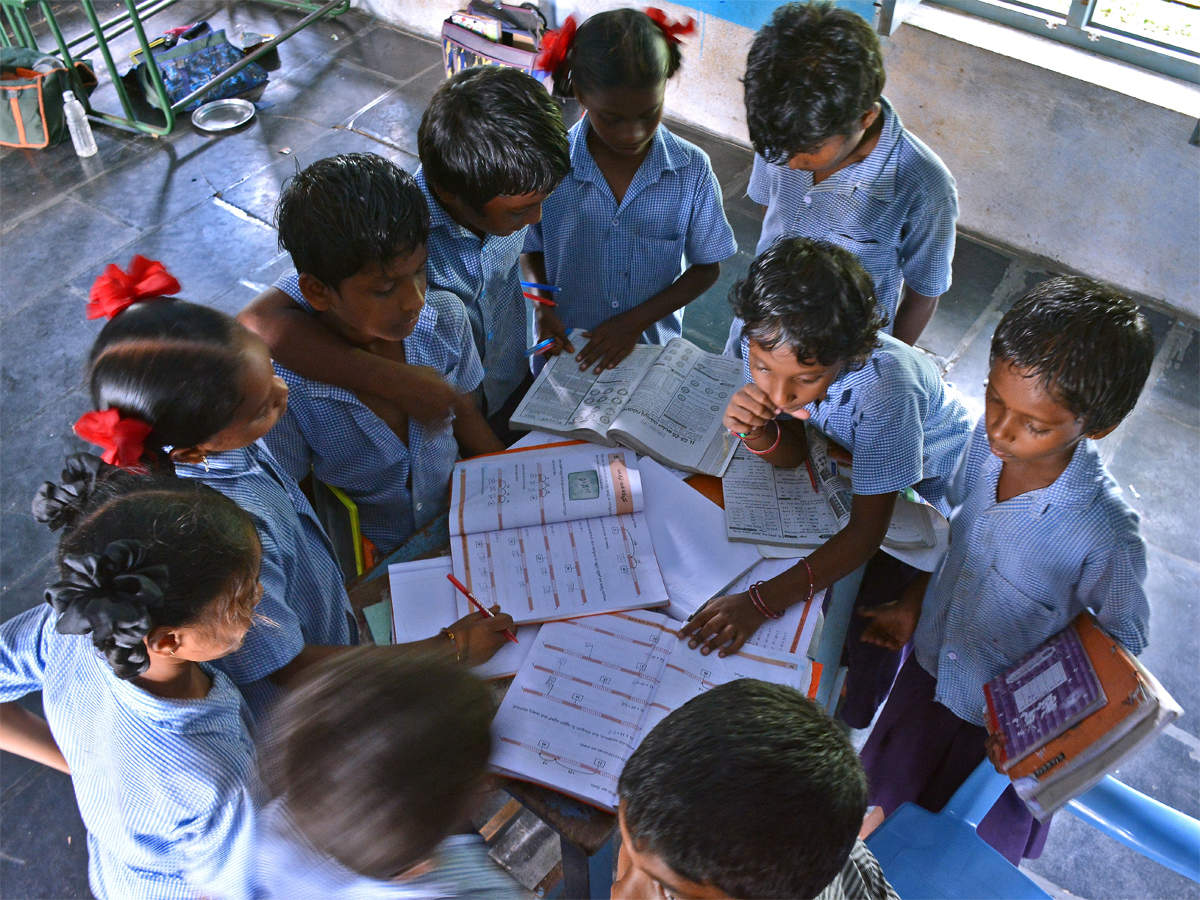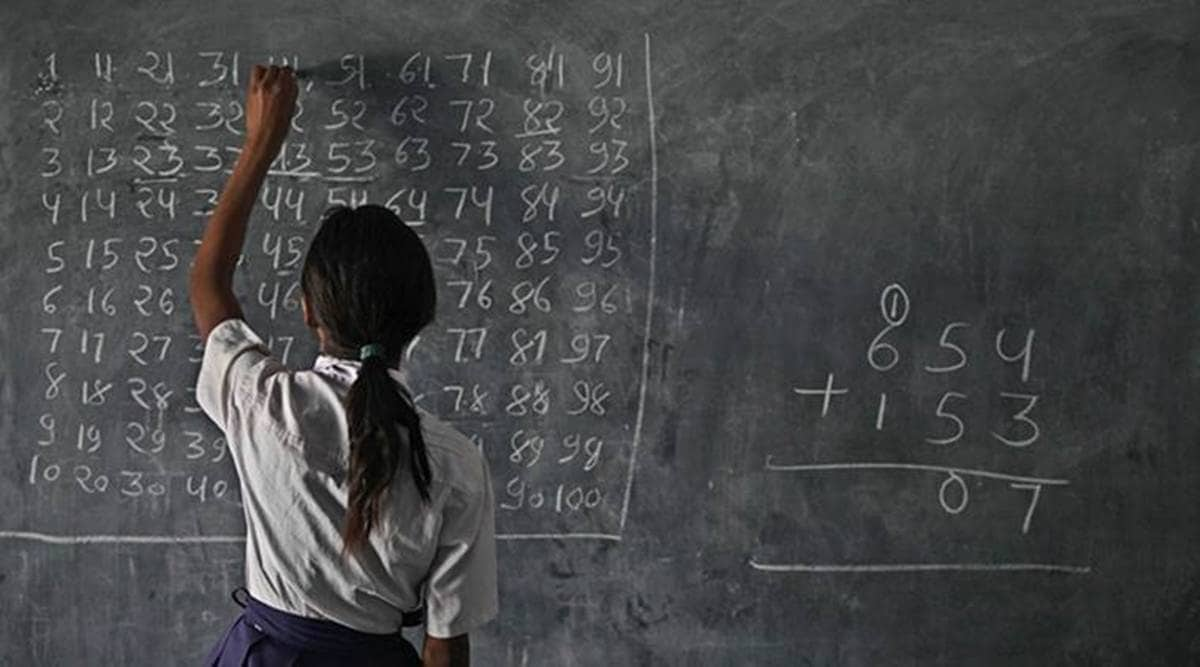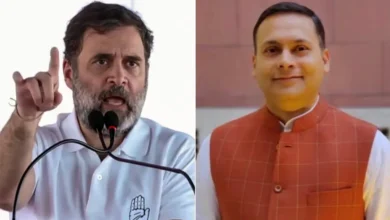Elimination of illiteracy through the involvement of youth

Elimination of illiteracy through the involvement of youth
About half of a developing country such as India is illiterate. Despite producing the best doctors and engineers globally, India is a backward country in terms of education. Many rural residents are illiterate, and many are illiterate. Lack of opportunity and economic backwardness have prevented them from obtaining literacy and education.
As a result of education, a man becomes more enlightened, more eligible, and more prosperous on all levels. In a democratic society, illiteracy is a severe handicap. Their illiteracy drives political officials and intermediaries exploitation of these simple people. Politicians and intermediaries use false promises to mislead the people.
The students can play a vital role in eradicating illiteracy in our nation. The motto for the students is ‘Each one, Teach one, which means that classes are to be organized into groups.
They can also spend time teaching illiterate people during vacations. By seeking the assistance of NGOs, education institutes and National Literacy Missions, they can light the lamps of literacy in the lives of underprivileged citizens. Students and NGOs who work on this issue deserve support from the government. To eradicate illiteracy from its roots, there must be continuous follow-up.
In building a nation, youth play an essential role. As populations increase, students have more responsibilities. These students represent the core of any nation’s development. Most Indians live in villages, where there are no schools or educational facilities, and most towns are illiterate.
This prevents villagers from learning. Due to poverty and ignorance, the poor and the weaker sections have been denied literacy. Therefore, the youth are required to impart their valuable knowledge to them through teaching. They can share their practical advice and guide them through the education process.
Education aids in the development of the mind, body, and spirit. One’s outlook on society is broadened by education. Illiteracy and lack of education are like curses. By establishing evening classes and adopting the motto “each one teaches one”, students can do their part in helping these people. A student can spare at least one hour for the less privileged out of the 24 hours they have.
Educating the illiterates about overpopulation and advising them to have a small family can boost awareness among the illiterates. Many governmental and non-governmental organizations assist these youths. Incentives such as extra marks or grades can encourage them to do so.
Educating the illiterate can make a considerable difference to the progress and prosperity of the country by changing their attitude and thinking. Therefore, let’s work together to eliminate illiteracy throughout our country.
Illiteracy is eradicated mainly through the efforts of students. Because students must be engaged in the learning process and enlightened to guide others out of illiteracy, it is students’ responsibility to make sure that they are involved in the learning process. You can prevent poverty and illiteracy in this modern age by following these five easy steps.
A teacher would be wasting their time if students were not ready to learn and would be without a student to teach.
Poor students or students in other life situations that prevent them from attending school are among those who cannot access education. But one thing that is important to The students themselves must be prepared and willing to participate if illiteracy is eradicated. To eradicate illiteracy, one or a nation must thirst for education or learning.
This means that even those in poverty must show a willingness to learn from their counterparts who are better. It follows that education in this contemporary world is easily accessible.
Consequently, from this alone, we can see that the role of students is crucial in eliminating poverty.
Due to their extensive time, students can play an imperative role in extinguishing the lack of education. They can devote several hours to teaching the uneducated in towns or regions close to their residences during summer vacations.
Enabling the inexperienced to achieve living aptitudes, proper hygiene, childcare, and nourishment can stir the untrained. Aside from that, they can rescue ignorant people from the burden of social injustices like faith in superstitions, religious bias, communalism, and limited-mindedness that plague their minds.
Illiterate people can educate on the importance of literacy. They can inform about administration plans for their inspiration and development. NGOs and educational organizations can help improve their presentation with the assistance of National Literacy Missions.
It will be necessary for a country to involve its students in the literacy program if it expects to reach 100% literacy. It originated before the declaration of the Emancipation Declaration and is a famous historical proverb from America. Before the Emancipation Declaration, black people did not have access to education.
As a result, ‘each one teaches one was launched to inform the coloured communities of their rights as many uneducated people as possible were introduced by the few educated black people.
Education plays a significant role in eliminating illiteracy. A substantial component of the fight against illiteracy is the involvement of students. In addition, students are responsible for participating in the educational process and becoming enlightened to assist others who require education.
It is possible to avoid poverty in this modern age by having access to education—student’s need to actively participate in the learning process and get access to limitless knowledge.
Teachers without students who are available and interested in learning would be wasting their time and wouldn’t have anyone to teach at the end of the day.
Many students cannot complete their education due to poverty or other life situations that impede their participation in the educational process. The students themselves will have to be willing and available to partake of this treasure if illiteracy is eradicated.
To eradicate illiteracy, there must be a thirst for education or learning for one or a nation. Due to the desire that drives the student to seek out a learning environment, they will cause to seek out a way to learn or be taught.
This means that even those in poverty must show a willingness to learn from their counterparts who are better. Hence, access to education is readily available in the present day.
Therefore, one can conclude that students help eradicate poverty just from this fact alone. It is conceivable for students to assist in eradicating lack of education since they have so much time on their hands. They can spend a few hours instructing the uneducated people in their neighbourhood or city during their summer vacations.
During the summer holidays, The educators can read aloud passages on living aptitudes, cleanliness, childcare, and nutrition to the schoolchildren. As well as removing the social evils from their psyches such as their faith in superstitions, religious bias, communalism and narrow mindedness, they are also able to remove the social wrongs from the minds of the ignorant.
The students can perform street plays that expose the void of different convictions among the illiterate. They can raise awareness regarding the significance of being illiterate and learn more about administration plans for their inspiration and development.
On top of that, the unskilled can avoid being duped by cunning and deceitful people through proficiency. Nonetheless, educational organizations, NGO’s, and social gatherings can help them to handle this task better.
India is being hailed as one of the world’s most dynamic economies. The country is a leader in the race for missiles, satellites, and spacecraft, but that is only one side of the story. But only a few states in India have achieved a literacy rate of 100 per cent or more, according to the 2011 census.
India is afflicted with illiteracy. Our tribal areas and villages are primarily illiterate. The elderly and disadvantaged sections of our society are also affected. It is the aim of the central government and that of the state governments to eradicate illiteracy in India. Numerous non-governmental organizations also work in this area.
The task is enormous. Youth involvement, particularly student involvement, is essential to its success. Illiteracy can be wiped out in India with the assistance of students. Our society has never experienced consistent growth in material or educational terms. The majority of our villages are illiterate and ignorant.
People from marginalized societies, especially landless labourers, are illiterate. These children frequently work as children instead of going to school. Government schools in various states have provided free education for all students up to the primary level and other incentives.

Several children have been attracted to schools by the midday meal scheme. However, this is insufficient. Children can educate adults. Adult literacy programs have shown great success with students’ help. Adults and working women in a village are literate by students from the area.
This is where students should focus their efforts first. A donation of one hour per week is more than enough. Millions of illiterate people can be enlightened by it. By eradicating illiteracy from India, the youth and students can fulfil their responsibility.
Only by asking questions did science begin and survive. It is fundamental to science, and the endless questions that children ask are well known to parents and teachers alike. Thus, children are our first scientists.
To raise good human beings – enlightened and hardworking – every parent must be willing to make an effort. The teacher’s role is to inspire creativity in children, and the teacher is the window to learning and knowledge. I think this triangle is the most valuable representation of role models.
To the extent that I would even say that if parents and teachers demonstrated the commitment required to shape the lives of the young, India would receive a new lease on life. Parents stand behind the school, and teachers stand behind their homes.
We should foster a sense of dignity and self-respect in our children through education. The law cannot impose these qualities – the individual must nurture them. A nation’s youth is the wealth of the country. Who will be their role models as they grow up? Teachers and parents play an essential role as role models for children in elementary school. Role models for the children will be the nation’s best in science, technology, and business.
I sincerely wish that the Ed-Tech teachers, who teach and inspire students every day, will continue their unmatched and noble services in the future, thus making sure that Indian brilliance continues to march in every sphere.
Students from e-tech would elevate India’s status globally with their innovative approach. Those who acquire skills through technology will use them later to develop health care, telemedicine, illiteracy removal, skill generation, e-government & Tele-education. Hopefully, they will transform the nation into a knowledge society with information technology as the linking mechanism.
Rejuvenating education in India to eradicate illiteracy
Any country that suffers from illiteracy will suffer from slow development. As a result, we face employment issues, population explosions, poverty, etc. Since independence, India has been facing a high rate of illiteracy. A slight drop in India’s illiteracy rate is due to the efforts of NGOs and the government. But we haven’t achieved our goals. To help eradicate illiteracy in India, we can do many things.
Analysis of Illiteracy in India
Two hundred eighty-seven million adults in India are illiterate, making it the country with the highest illiteracy rate. India’s education levels are staggeringly different. A stable economic growth rate and a low literacy rate do not constitute a promising nation. For a country to compete globally, it needs higher literacy rates.
Citizens have the right to receive education as a fundamental right. There are disparities between different states in India, including Jharkhand, Arunachal Pradesh, and Bihar, where the literacy rates are still low.
How we define literacy?
Reading and writing are two aspects of literacy. As a process, it includes the ability to comprehend printed text and adapt visual representations and technological awareness. It is, therefore, a multi-dimensional concept whose parameters constantly evolve in line with the events taking place in the globalized world today.
Reading is the process of identifying, understanding, and interpreting printed or written materials in connection with varying contexts and creating, communicating, and computing. Literacy encompasses all aspects of learning that contribute to accomplishing goals and developing knowledge and skills required to participate in our communities and societies.
Causes of Illiteracy in India
There is a complex dimension attached to Indian illiteracy, and different disparities heavily influence it. There is a gender imbalance, a state imbalance, an income imbalance, a caste imbalance, and sometimes a technology barrier that controls literacy rates.
In 2011, the literacy rate for men was around 82%, and that for women was 65% in India. Duties for women are traditionally handled by men, which results in low female literacy. It creates a vicious circle is created. Education is a concept that has been known for a long time that the rich will have better access to than the poor.
In the absence of skills or knowledge, the poor are disadvantaged. They are forced to work unskilled jobs to support their families. Thus, education becomes less important than earning income for surviving and living.
The literacy rates in some Indian states have been compared to those in states that spend less money on education. In Kerala, for instance, there is a 685 dollar investment in its educational system. Teachers are in short supply, and government-run schools are inefficient because they are all employed.
The lack of proper sanitation is another cause of high dropout rates, especially among girls. According to a study, there are also 59% of schools without drinking water facilities.
Is India’s illiteracy a result of economic problems?
In India, illiteracy is primarily a consequence of poverty and unemployment. India’s illiteracy rates are directly linked to poverty, a curse to all other issues. People in India have difficulty acquiring basic, nutritious food, and the absence of potable water is an effect of poverty that suppresses the illiteracy problem. Indeed, food and water are among the things people want to lift themselves out of poverty and acquire for themselves.
In India, illiteracy is a burden passed from generation to generation as its effects are compounded. As a result, it has steadily increased with each age and each new year.
At both the elementary and higher education levels, commercialization of education is slowly ruining a level of education. Private schools nowadays charge enormous fees that low-income families cannot afford to pay to send their children to school. Nonetheless, the mid-may meal scheme was introduced in government schools to provide a nutritious diet for all students to help them prepare better for their studies.
An essential national priority is eradicating illiteracy
Since the country’s independence, the government has killed poverty through various programs. Even so, encouraging people to continue with education is still necessary.
Several NGOs and the Indian government have been working to eradicate illiteracy for children and adults in India. Adults can learn to read and write using basic financial literacy programs on a computer, and NGO’s provide night classes and study facilities and motivate people to attend. A literary budget is also allocated and solely aimed at improving reading and writing skills in children and adults.
Eradicating illiteracy in India: The government’s role

Children have the right to free education, according to a 1993 Supreme Court decision. The action took the form of the 83rd Amendment in 2000, which incorporated the “Right to Education.” into the Constitution.
Despite this, free and compulsory education was unable to be provided for children up to fourteen. To motivate parents and educate children, the government is developing new forms and developing the teaching process.
According to the Indian Constitution, education is essential for everyone. Thus, several provisions have been made to guarantee that educational rights in India are appropriately and effectively realized.
- The right of all minorities to set up and administer their educational institutions as defined in Article 30 of the Constitution.
- The Directive Principles for State Policy of the Constitution provide that free and compulsory education must be provided to all citizens.
- Under the law, equality of opportunity means that no discrimination may enact based on race, colour, nationality, caste, status, gender, race, or creed. All citizens of a country should have the same opportunities.
- According to Article 21 (A), all students between the ages of six and 14 are entitled to free and compulsory education. This is the fundamental right of all children.
- There is also protection for the educational interests of the weake sections of the society under Articles 15, 17, and 46 of the Constitution.
The Government’s Schemes Face Problems
There are several programs to ensure that all children in the country have access to education. It is stated in the National Policy of Education that the entire nation is required to contribute to the eradication of illiteracy, especially among young people. A community initiative was made available to promote literacy in 1988 to help turn the tide of illiteracy.
By 2035, the country aims to increase literacy rates to 41%. Before the advent of the 21st century, all children up to the age of 14 received free and compulsory education under the education policy of 1992. In India, illiteracy still prevails, and the procedure has failed to prevent school dropouts.
In 2001, the Sarva Siksha Abhiyan was launched to ensure that every child between the ages of 6 and 14 attends school and finishes eight years of education by then. Education Guarantee Scheme and Alternative & Innovative Education were essential components of that program, intended primarily for children living in areas without a formal school.
Because most policies do not generate a mass consensus, the Sarva Shiksha Abhiyan incorporates decentralization for planning and managing elementary education. Therefore, there is insufficient clarity about the objectives between these bodies regarding the spread of education.
The allocation of funds raised by the government for education is also plagued by corruption, which has become an intractable problem. The money allocated for implementing the scheme was less than the actual budget for education.
Hinduism helps spread education for the government in what ways?

We are willing and committed to spreading knowledge and establishing our NGOs as effective mechanisms for acquiring literacy and empowering underprivileged members of society. Our NGO works for the people and children in general, as most people participating in the survey are aware. Primary education is a priority for most state governments.
Thus, Hinduism helps poor children gain access to education through government schemes and objectives. Children participating in literacy programs receive the financial support they need from the state.
As an NGO, we emphasize the importance of primary education to teachers and students. The awareness campaigns we conducted to educate people about the value of education have resulted in significant improvements, and we are making substantial progress. Government schools must be held accountable for performing well, public schools need to be scrutinized, and labs and classroom facilities need to be improved.
Takeaway
The effects of illiteracy are felt throughout a person’s life. Individuals who lack literacy cannot work in a labour force or only work as unskilled labour, and their lack of awareness can affect their judgement in making decisions. In addition, children of illiterate parents get less education as well.
Children of illiterate parents will not be able to learn to read even if they As compared to educated parents, parents whose children attend the same school lack awareness. Thus, India’s economic and social development is affected by illiteracy.
Article Proofread & Published by Gauri Malhotra.




